![10462709_1021928441187387_967791446083398029_n[1]](https://www.thebullvine.com/wp-content/uploads/2016/03/10462709_1021928441187387_967791446083398029_n1-225x300.jpg) It has been 662 days since Reese Burdette entered Johns Hopkins Hospital fighting for her life after being pulled from a house fire. She has spent almost two years in Johns Hopkins Children’s Hospital’s Pediatric Intensive Care Unit, recovering from the severe burns she suffered in a fire at her grandparents’ home over Memorial Day weekend in 2014. Reese and her younger sister, Brinkley, were staying with their grandparents Patricia and Mike Stiles at Waverly Farms in Clear Brook, Virginia, when the fire apparently started with an electrical cord and quickly spread in the two-story home.
It has been 662 days since Reese Burdette entered Johns Hopkins Hospital fighting for her life after being pulled from a house fire. She has spent almost two years in Johns Hopkins Children’s Hospital’s Pediatric Intensive Care Unit, recovering from the severe burns she suffered in a fire at her grandparents’ home over Memorial Day weekend in 2014. Reese and her younger sister, Brinkley, were staying with their grandparents Patricia and Mike Stiles at Waverly Farms in Clear Brook, Virginia, when the fire apparently started with an electrical cord and quickly spread in the two-story home.
Patricia Stiles was a hero for running into the fire to save Reese. Both were burned and suffered smoke inhalation. Stiles was airlifted to MedStar Washington Hospital Center and Reese was airlifted to Johns Hopkins Hospital. She was burned on over 35 percent of her body and sustained damage to her heart and lungs from smoke inhalation. (Read more: PATRICIA STILES –DAIRY FARMER, GRANDMOTHER, HERO, FIGHTING FOR HER LIFE!) During her time in the hospital, she has endured five cardiac arrests, daily blood transfusions, internal bleeding, collapsed lungs, and surgeries to repair holes in her lungs. She emerged from a medically induced coma after almost four months, then ticked off a list of surgeries, recovery milestones, and therapies in her quest to return home.
Today is that day.
“I’m going to be in a parade,” said Reese.
Reese grew up on a dairy farm with one special heifer, Pantene; that gave birth this week.
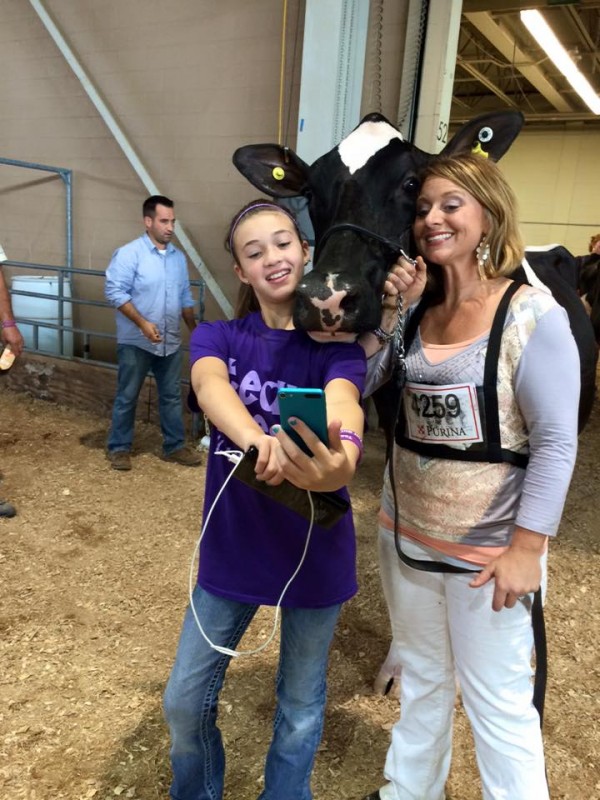 “I want to go to the farm to see my cow,” Reese said Wednesday. We were all touched when, earlier this year, the family brought Pantene on a surprise visit to see Reese at the hospital. You could not help but shed a tear when Pantene was named Reserve Grand at Pennsylvania’s State Holstein Show, and Reese was able to see it all. Through the advances of mobile internet, she was able to watch the whole show through FaceTime. (Read more: EXTRA SPECIAL DAY FOR REESE BURDETTE – PANTENE WINS RESERVE GRAND)
“I want to go to the farm to see my cow,” Reese said Wednesday. We were all touched when, earlier this year, the family brought Pantene on a surprise visit to see Reese at the hospital. You could not help but shed a tear when Pantene was named Reserve Grand at Pennsylvania’s State Holstein Show, and Reese was able to see it all. Through the advances of mobile internet, she was able to watch the whole show through FaceTime. (Read more: EXTRA SPECIAL DAY FOR REESE BURDETTE – PANTENE WINS RESERVE GRAND)
Asked what she plans to say to the cow, Reese said her message will be “I miss you.”
That same sentiment is already being expressed by the hospital staffers who have grown to love the Burdette family. Close to 400 people were invited to a going-away party.
Dr. Kristen Nelson, director of cardiac critical care in pediatrics, cries when she thinks of not having daily interaction with the Burdettes. Nelson said she will carry Reese in her heart.
“I say to people: ‘I could retire today and be fulfilled,’ she said.
Reese’s treatment will soon be featured in medical journals. It is discussed already at conferences about the machines that supported her heart and lungs as they healed. She spent longer with ventricular assistance than any other known patient.
“She persevered and succeeded at everything we asked of her,” Nelson said.

Justin and Claire Burdette consider Nelson to be part of their family, as does Reese. That means the doctor can’t escape Reese’s trademark sassiness, like the eye-rolling that accompanies Nelson’s tears about the pending goodbye.
[fbvideo link=”https://www.facebook.com/TheHeraldMail/videos/10155590196958644/” width=”640″ height=”480″ onlyvideo=”1″]
The Burdettes have split their time between the farm and hospital for the duration of Reese’s stay. They developed a schedule to ensure their daughter had a family member with her every moment.
“We wouldn’t do it any other way,” Claire Burdette said.
The family was called the hospital too many times in those first several months to say what doctors thought would be their goodbyes. Reese’s first four months in the Pediatric Intensive Care Unit was like a nightmare the family just could not wake up from. They had no idea throughout those long months if Reese would still be Reese when she woke up. It was suspected that all the heart attacks might have resulted in a loss of brain function. Would their spunky little girl who loves her family and friends, music, her cows, belly laughing and being in 4-H still be there? Yet, Reese is here today so full of spark and life; doctors say she is a miracle child. For Reese’s father Justin, the turning point in her recovery — when he knew she would recover — was the successful open-heart surgery she had Dec. 7 to remove the ventricular assistance device.

Burdette said he knows being at home on a new schedule without the professional caregivers will present its own challenges.
“It’ll be a big learning curve for everybody,” he said.
The family hopes to take a few days of quiet, personal time before welcoming guests to the farm.
“I think that’ll be an adjustment because she’s a people person,” Claire Burdette said, pointing out that Reese has had people buzzing around her 24 hours a day for two years.
Those two years have changed many lives.
In situations like this, it is important to advocate for your child, keep the faith and work to keep strong your relationship with your spouse, Justin Burdette said.
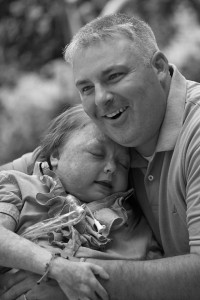 “Never give up on hope. I could tell you stories all day long where God has shown himself,” Claire Burdette said. (Read more: THE BURDETTE FAMILY – TRIUMPH AND TEARS, PERSEVERANCE AND PAIN LEADS TO HOPE AND HEALING and GRACE UNDER PRESSURE)
“Never give up on hope. I could tell you stories all day long where God has shown himself,” Claire Burdette said. (Read more: THE BURDETTE FAMILY – TRIUMPH AND TEARS, PERSEVERANCE AND PAIN LEADS TO HOPE AND HEALING and GRACE UNDER PRESSURE)
Her school and the surrounding community have rallied around her all along, forming “Team Reese” and raising money for her medical expenses and just keeping her spirits up. Burdette’s elementary school is also decked out in her favorite color, purple. Everyone, there is anxiously awaiting her return.
“I’m excited for her to come home because she’s been away for almost two years now and we just miss her a lot,” said Daisy Donahoe, Reese’s friend.
Despite the injuries and recuperation, Reese has been able to attend school at Mercersburg Elementary School using a virtual presence device to view what was taking place in the classroom. Reese has been using the robot since last October. This all came after Reese missed more than a year’s worth of school due to her injuries. Burdette’s resistance is teaching her teachers a lesson.
“I think that we all just see her as our hero because she’s been through so much and she’s just shown us that if you put your mind to it, you can accomplish anything,” said Jaimie Pine, Reese’s teacher.
Initially, Reese was supposed to have several police and fire departments escorting her home from the hospital. According to Reese’s elementary school principal, Ryan Kaczmark, Reese decided that she didn’t “want to be tied down” and hold anyone up on the family’s way home, so there will not be any escorts until she arrives in Mercersburg.

“She declined her motorcade,” Kaczmark said.
However, Reese will be escorted by the Mercersburg Fire Department through town once her family arrives. The family will meet the fire department at Montgomery Elementary School first and will then head north, stopping at Mercersburg Elementary and then on through downtown Mercersburg before finally returning to her family’s home for the first time in almost two years.
[fbvideo link=”https://www.facebook.com/inboundsales/videos/vb.667615017/10156537944410018/?type=2&theater” width=”640″ height=”480″ onlyvideo=”1″]
The Bullvine Bottom Line
“It was sort of her goal this year to try and be home before her birthday,” said Mercersburg Elementary PTO President Kelly Sanchez. Reese will celebrate her 9th Birthday this Sunday, at home. Happy Birthday, Reese we Love You!”
 Dr. Ken Nordlund is a clinical professor in the Food Animal Production Medicine group in the School of Veterinary Medicine at the University of Wisconsin-Madison. He received his veterinary degree from the University of Minnesota in 1977 and was a private practitioner and practice owner in Fergus Falls, Minnesota, from 1977 to 1989. Ken is a board-certi ed dairy specialist in the American Board of Veterinary Practitioners. In 1989, he joined the University of Wisconsin and helped to found the Food Animal Production Medicine program. His research interests include dairy record systems and the development of the Transition Cow IndexTM, as well as interactions between dairy cattle housing and health.
Dr. Ken Nordlund is a clinical professor in the Food Animal Production Medicine group in the School of Veterinary Medicine at the University of Wisconsin-Madison. He received his veterinary degree from the University of Minnesota in 1977 and was a private practitioner and practice owner in Fergus Falls, Minnesota, from 1977 to 1989. Ken is a board-certi ed dairy specialist in the American Board of Veterinary Practitioners. In 1989, he joined the University of Wisconsin and helped to found the Food Animal Production Medicine program. His research interests include dairy record systems and the development of the Transition Cow IndexTM, as well as interactions between dairy cattle housing and health.




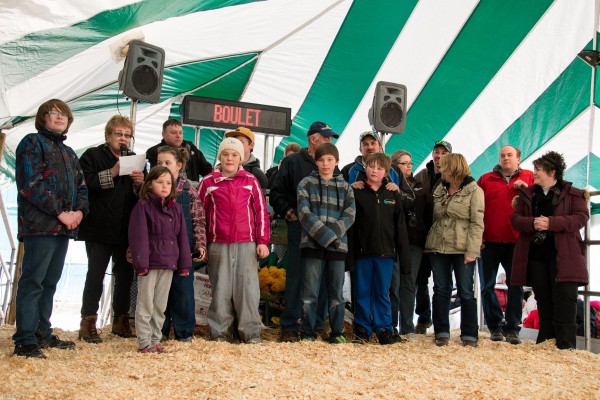



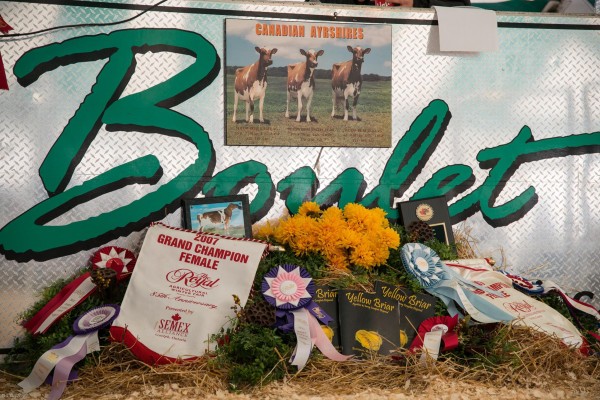
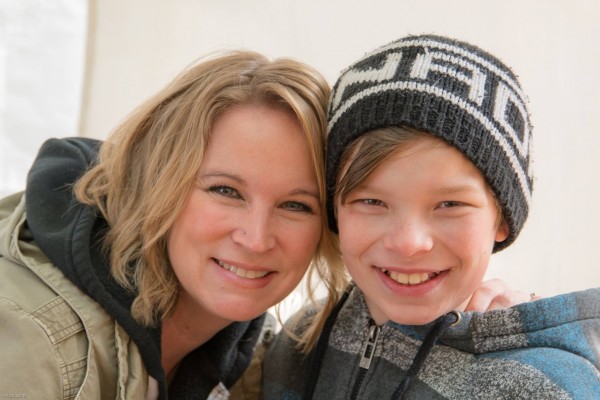




![zoetis[1]](https://www.thebullvine.com/wp-content/uploads/2015/06/zoetis1.jpg)
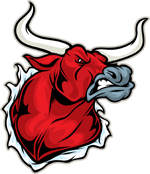

 Dr. Trevor DeVries is a Canada Research Chair in Dairy Cattle Behavior and Welfare and an Associate Professor in the Department of Animal Biosciences at the University of Guelph. Trevor received his B.Sc. in Agriculture from The University of British Columbia (UBC) in 2001. Immediately following he began graduate studies at UBC, focusing his research on dairy cow feeding behavior. After receiving his Ph.D. in 2006, he worked for one year as a post-doctoral researcher at Agriculture and Agri-Food Canada, focusing his research on ruminant nutrition. In 2007 he was appointed as faculty with the University of Guelph. In his current position Trevor is involved in research and teaching in the areas of dairy cattle nutrition, management, behavior, and welfare.
Dr. Trevor DeVries is a Canada Research Chair in Dairy Cattle Behavior and Welfare and an Associate Professor in the Department of Animal Biosciences at the University of Guelph. Trevor received his B.Sc. in Agriculture from The University of British Columbia (UBC) in 2001. Immediately following he began graduate studies at UBC, focusing his research on dairy cow feeding behavior. After receiving his Ph.D. in 2006, he worked for one year as a post-doctoral researcher at Agriculture and Agri-Food Canada, focusing his research on ruminant nutrition. In 2007 he was appointed as faculty with the University of Guelph. In his current position Trevor is involved in research and teaching in the areas of dairy cattle nutrition, management, behavior, and welfare.![10462709_1021928441187387_967791446083398029_n[1]](https://www.thebullvine.com/wp-content/uploads/2016/03/10462709_1021928441187387_967791446083398029_n1-225x300.jpg) It has been 662 days since Reese Burdette entered Johns Hopkins Hospital fighting for her life after being pulled from a house fire. She has spent almost two years in Johns Hopkins Children’s Hospital’s Pediatric Intensive Care Unit, recovering from the severe burns she suffered in a fire at her grandparents’ home over Memorial Day weekend in 2014. Reese and her younger sister, Brinkley, were staying with their grandparents Patricia and Mike Stiles at Waverly Farms in Clear Brook, Virginia, when the fire apparently started with an electrical cord and quickly spread in the two-story home.
It has been 662 days since Reese Burdette entered Johns Hopkins Hospital fighting for her life after being pulled from a house fire. She has spent almost two years in Johns Hopkins Children’s Hospital’s Pediatric Intensive Care Unit, recovering from the severe burns she suffered in a fire at her grandparents’ home over Memorial Day weekend in 2014. Reese and her younger sister, Brinkley, were staying with their grandparents Patricia and Mike Stiles at Waverly Farms in Clear Brook, Virginia, when the fire apparently started with an electrical cord and quickly spread in the two-story home. “I want to go to the farm to see my cow,” Reese said Wednesday. We were all touched when, earlier this year, the family brought Pantene on a surprise visit to see Reese at the hospital. You could not help but shed a tear when Pantene was named Reserve Grand at Pennsylvania’s State Holstein Show, and Reese was able to see it all. Through the advances of mobile internet, she was able to watch the whole show through FaceTime. (Read more:
“I want to go to the farm to see my cow,” Reese said Wednesday. We were all touched when, earlier this year, the family brought Pantene on a surprise visit to see Reese at the hospital. You could not help but shed a tear when Pantene was named Reserve Grand at Pennsylvania’s State Holstein Show, and Reese was able to see it all. Through the advances of mobile internet, she was able to watch the whole show through FaceTime. (Read more: 

 “Never give up on hope. I could tell you stories all day long where God has shown himself,” Claire Burdette said. (Read more:
“Never give up on hope. I could tell you stories all day long where God has shown himself,” Claire Burdette said. (Read more: 

 As the Vice-President of Genetic Programs for Select Sires Inc, Charles (Chuck) Sattler is responsible for leading, managing and developing the sire department in the areas of administration, genetic research programs and the industry-leading Program for Genetic Advancement™ (PGA™). Prior to working at Select Sires, Sattler spent 12 years working for the National Association of Animal Breeders (NAAB), most recently as its genetics programs and information services administrator. He currently serves as the Chairman of the Board of Directors for the National Association of Animal Breeders and also serves as a Director for the Council on Dairy Cattle Breeding.
As the Vice-President of Genetic Programs for Select Sires Inc, Charles (Chuck) Sattler is responsible for leading, managing and developing the sire department in the areas of administration, genetic research programs and the industry-leading Program for Genetic Advancement™ (PGA™). Prior to working at Select Sires, Sattler spent 12 years working for the National Association of Animal Breeders (NAAB), most recently as its genetics programs and information services administrator. He currently serves as the Chairman of the Board of Directors for the National Association of Animal Breeders and also serves as a Director for the Council on Dairy Cattle Breeding.
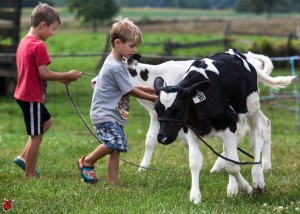
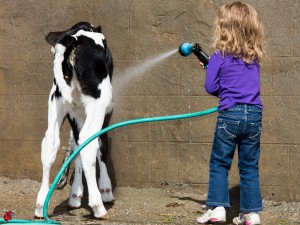
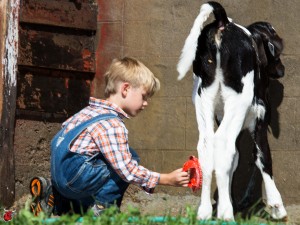
![clarifideplus_1200x834[1]](https://www.thebullvine.com/wp-content/uploads/2016/03/clarifideplus_1200x8341-600x417.png)
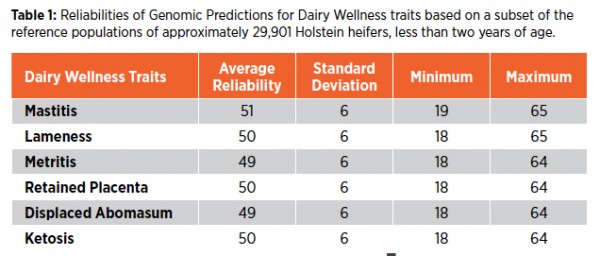
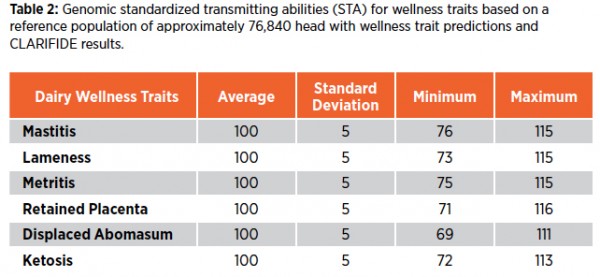
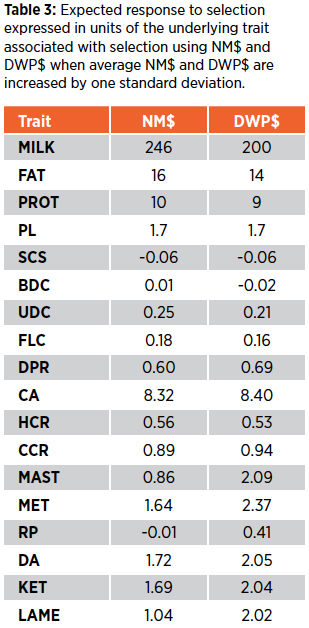 The economic indexes in CLARIFIDE Plus were derived using standard selection index theory. Economic assumptions were derived from those used in NM$ for the case of core traits, and from a review of peer-reviewed literature for wellness traits. Economic values for health traits that are considered in the derivation of NM$ were removed to avoid double-counting of the contributions of disease to dairy profitability. Economic values were then adjusted within the range of reported values based on the covariance among traits to achieve the final index weights.
The economic indexes in CLARIFIDE Plus were derived using standard selection index theory. Economic assumptions were derived from those used in NM$ for the case of core traits, and from a review of peer-reviewed literature for wellness traits. Economic values for health traits that are considered in the derivation of NM$ were removed to avoid double-counting of the contributions of disease to dairy profitability. Economic values were then adjusted within the range of reported values based on the covariance among traits to achieve the final index weights.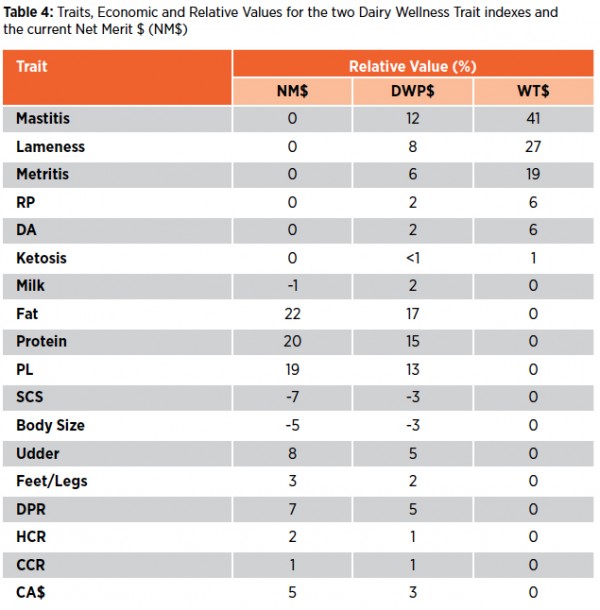
 Anyone who has ever attended Swiss Expo will tell you that there is nothing like it in the world. Even before the cows enter the ring, the ambiance is electric. Your heart rate increases and you can’t wait for the stars of the show to enter. Simply put, attending Swiss Expo will be one of the greatest show experiences that you will ever have in your life.
Anyone who has ever attended Swiss Expo will tell you that there is nothing like it in the world. Even before the cows enter the ring, the ambiance is electric. Your heart rate increases and you can’t wait for the stars of the show to enter. Simply put, attending Swiss Expo will be one of the greatest show experiences that you will ever have in your life.![12496476_804177783026429_1175859262466376488_o[1]](https://www.thebullvine.com/wp-content/uploads/2016/03/12496476_804177783026429_1175859262466376488_o1-600x400.jpg)
![12471756_10156302046540018_835532716610376766_o[1]](https://www.thebullvine.com/wp-content/uploads/2016/03/12471756_10156302046540018_835532716610376766_o1-600x509.jpg)
![12471524_10156302046900018_783056560038255820_o[1]](https://www.thebullvine.com/wp-content/uploads/2016/03/12471524_10156302046900018_783056560038255820_o1-600x455.jpg)
![12419362_10156302638700018_8962192075034312863_o[1]](https://www.thebullvine.com/wp-content/uploads/2016/03/12419362_10156302638700018_8962192075034312863_o1-600x438.jpg)
![12493630_10156302047620018_4558420413059822510_o[1]](https://www.thebullvine.com/wp-content/uploads/2016/03/12493630_10156302047620018_4558420413059822510_o1-600x136.jpg)
![12473639_10156298289805018_3946373145281009672_o[1]](https://www.thebullvine.com/wp-content/uploads/2016/03/12473639_10156298289805018_3946373145281009672_o1-600x400.jpg)
![12471693_10156298254770018_26140093491122515_o[1]](https://www.thebullvine.com/wp-content/uploads/2016/03/12471693_10156298254770018_26140093491122515_o1-600x400.jpg)
![12484658_10156298253745018_5556833803518184630_o[1]](https://www.thebullvine.com/wp-content/uploads/2016/03/12484658_10156298253745018_5556833803518184630_o1-600x400.jpg)
![12489388_10156302638475018_4768090093774257157_o[1]](https://www.thebullvine.com/wp-content/uploads/2016/03/12489388_10156302638475018_4768090093774257157_o1-600x400.jpg)
![12496120_10156302638485018_5628424680409093662_o[1]](https://www.thebullvine.com/wp-content/uploads/2016/03/12496120_10156302638485018_5628424680409093662_o1-600x400.jpg)
![12514037_803838146393726_2117956831453943407_o[1]](https://www.thebullvine.com/wp-content/uploads/2016/03/12514037_803838146393726_2117956831453943407_o1-600x400.jpg)






